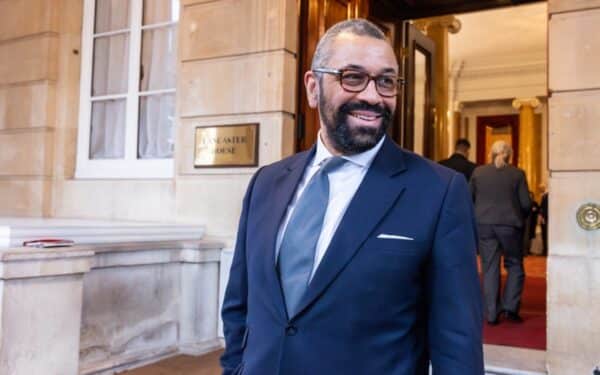Should they leave or remain, or is there a halfway house? I refer not to Brexit, but to the urgent refurbishment of the Houses of Parliament, which is at risk of being delayed by 100 MPs, who have signed a letter opposing a proposal to move temporarily out of the Palace of Westminster in favour of a complicated plan to conduct the work while still occupying parts of the building.
Ironically, many of those who want to Remain in the premises are prominent Leavers, when it comes to the EU, and include Sir Edward Leigh and Michael Gove in their number.
This may seem like a small, somewhat Trollopian political issue, but actually it is significant for two reasons. First, the obvious one that this building is a great symbol of our democracy, it is in a serious state of decrepitude and if the project goes wrong there will not only be an outcry, it will be a massive national embarrassment. A film shot by Newsnight is available here and explains the gravity of the situation.
Second, the issue is becoming caught up in the choice of the next Speaker of the House of Commons. The next Speaker will not only have to ensure the Brexit legislation gets through Parliament, he also has notional oversight of maintenance. The current incumbent, John Bercow, has not said he is going yet, but there is powerful speculation that he may resign before the next election, or at least confirm that he will not stand again.
Two of the best potential candidates to replace him, Labour’s Chris Bryant and the Tory MP Jacob Rees-Mogg, are both on the special select committee of both Houses which has recommended that Parliamentarians move out so the work may be done more cheaply, thoroughly and quickly.
The consultants – led by Aecomm, one of the world’s biggest and most respected engineering firms – say that if the Commons and the Lords move out, then the work can be done for about £4bn and completed in 5-6 years. If they all stay and it is done gradually it will cost more than £7bn and take at least twice as long.
Needless to say, Theresa May has responded to this issue by saying nothing and dawdling over the vote to approve the works. Jeremy Corbyn is apparently uninterested.
Those advocating the plan to stay in the building by utilising part of it during the works have commissioned their own report. But their plan suffers from numerous serious flaws, the most obvious one being common sense. Anybody who has ever refurbished their own house, let alone an iconic historic building, will tell you that if you try and occupy it at the same time the whole thing will be more stressful, expensive and time consuming.
Imagine the scene. Builder, peering at leaking Victorian pipework: “Blimey Guvnor, who put this in?” Honourable member: “Augustus Pugin. And please can you keep the noise down.”
Another flaw is an inadequate appreciation of risk. Clearly, the complexity of the project means that the experts are going to need proper access arrangements with the freedom to make as much noise, bring in as much machinery and remove as much rubble as required. They won’t be able to do that if they are tiptoeing around a working Parliament and the one million plus visitors it receives a year.
A final flaw, which one suspects is unconscious, is that they are jeopardising Mr Rees-Mogg’s chances of becoming Speaker before they have begun. He may appear like Central Casting’s idea of an eccentric Tory toff, but he is surely the front runner. It is harder to imagine somebody better suited to be Speaker, with a greater knowledge of procedure and the Constitution, who is a Leaver yet who also commands respect on all sides of the House.
If the Joint Committee on the Palace of Westminster has its recommendations rejected or voted down, it would be a serious blow. Rees-Mogg’s candidacy would fall apart faster than Cloister Court, a Medieval part of the building currently closed because it is unsafe.
Dan Cruickshank, an architectural historian, has said: “This building is part of our national identity. It is the great expression of Parliamentary democracy. It is where power resides. It is intoxicating. It is magical. The work has to be done properly. It has to set an example. It has to be the model of how to make a historic building work for the 21st Century.”
Crickshank is right. Those opposing moving out of the Palace of Westminster no doubt have decent motives, but they should consider that there could be no better symbol of a nation renewed after Brexit than a properly refurbished Parliament, being opened splendidly in the early 2020s, just as we finally depart the EU to take control of our own destiny once more.
The opposite is also true. A prolonged, failed and expensive refurbishment would be a great disservice to future generations and be seen around the world as both a humiliating fiasco and an emblem of how Britain has lost its way. The rebels are mistaken and should back down gracefully.



